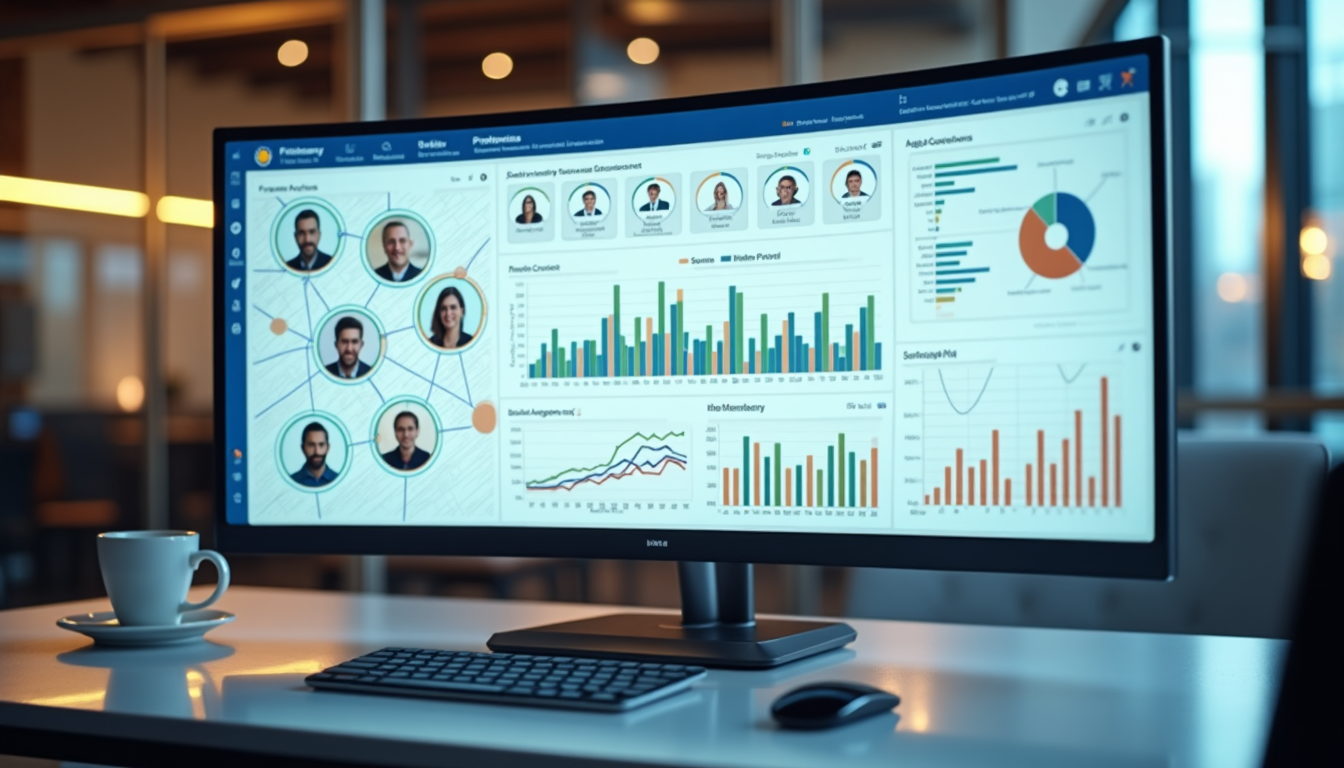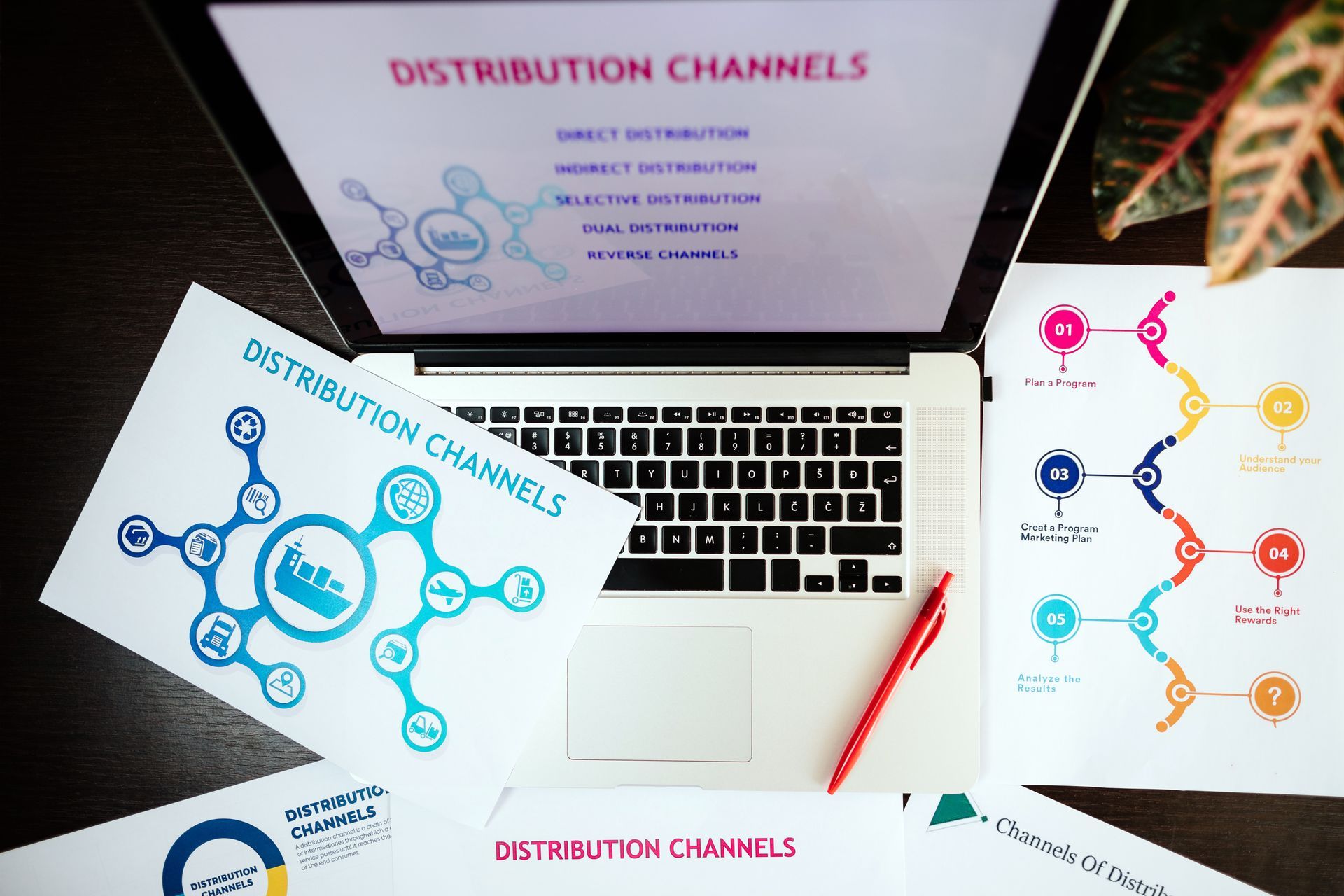How a Marketing Data Platform Helps You Deliver True 360-Degree Customer Views

120 marketing technology tools. That's how many the average enterprise uses today. This explosion of martech has created a mess. Your customer data sits trapped in different systems that don't talk to each other, making it impossible to understand who your customers really are.
The problem keeps getting worse. Netskope's 2019 Cloud Report shows businesses are struggling to build complete customer profiles with all these disconnected tools. Your marketing efforts suffer. Your customers notice.
The good news is that you can fix this. A marketing data platform pulls all your customer and prospect data together in one place – from your CRM, email marketing software, web analytics, and more. The result? Unified customer profiles you can actually use.
When you break down these data silos, you create a single source of truth. Everyone in your company works from the same accurate information. Your marketing team can finally see how audiences interact with your products or services. Brands like AVON and Samsung already do this, delivering personalized experiences at every touchpoint using both behavior data and direct customer input.
This isn't just a marketing win. Your entire organization benefits. Sales, finance, and other departments can tap into this aggregated information to make better decisions based on what's actually happening with your customers.
What is a Marketing Data Platform?
Think of a Marketing Data Platform as the brain of your marketing technology. It connects everything - all your customer data from every tool, channel, and system you use. Unlike your current setup with data trapped in different places, this central system gives you a complete picture of who your customers really are.
Definition of a Marketing Data Platform
Marketing Data Platforms pull data from everywhere - your CRM, online store, email software, mobile apps, website analytics, and content systems. This makes it easy to see how people actually interact with your products.
The main job of these platforms is creating unified customer profiles that let you take action right when it matters. Say someone abandons their shopping cart. You can immediately send them a personalized message to bring them back.
These platforms break down the walls between departments by giving everyone access to the same accurate information. No more situations where sales tells a customer one thing while customer service says another.
Beyond just gathering data, Marketing Data Platforms give you powerful ways to segment your audience and analyze their behavior. Your marketing team can finally build campaigns based on real data instead of hunches. This means better results you can actually measure.
How it differs from CDPs and DMPs
Marketing tech can get confusing with all these similar-sounding tools. Let's clear things up.
Customer Data Platforms (CDPs) focus on real-time, personally identifiable information. They gather data from your website and other channels to create audiences based on actual visitors, helping you personalize offers. They're great at tracking how people engage with you across different channels and spotting behavior patterns.
Data Management Platforms (DMPs) collect cookie data to see who's viewing your content. They mostly deal with anonymous information rather than personal details. Companies often use DMPs to buy third-party data or share second-party data with partners.
The key differences are:
- Data Types and Privacy: CDPs work with personal data for detailed profiles. DMPs use anonymous data. Marketing Data Platforms give you both for a complete view.
- Data Retention: CDPs keep data for long periods to build rich profiles. DMPs typically store data for just 90 days since they focus on immediate targeting. Marketing Data Platforms maintain long-term storage like CDPs.
- Primary Purpose: DMPs excel at advertising and targeting. CDPs focus on customer relationships using first-party data. Marketing Data Platforms do both while adding analytics capabilities.
For big companies, all these tools matter. They need to centralize data with a Marketing Data Platform, manage ad spending with DMPs, and connect audiences using CDPs.
Why it matters for modern marketing
Marketing Data Platforms solve fundamental problems that modern marketers face every day.
First, they give you that complete 360-degree view by connecting online and offline customer interactions. Big direct marketing companies have known the value of this for years. While some might see traditional marketing databases as outdated, this unified approach remains essential.
Second, you get real-time personalization capabilities. When someone visits your site, uses your app, or walks into your store, the platform recognizes them instantly and delivers content based on their history with you.
These platforms also help you make sense of massive amounts of data. You can spot patterns, predict trends, and understand customer behavior at a level that was impossible before.
The data quality improves too. Marketing Data Platforms clean up the messy data problems most companies struggle with. Your decisions are based on accurate information, not flawed data.
Most importantly, your marketing team can build future campaigns based on precise data rather than guesswork. This means better efficiency, better results, and better return on investment.
For companies just starting to build their marketing technology, a Marketing Data Platform should be the foundation. It's the central place where all your marketing data lives, ready to power every campaign and channel.
Unifying Customer Data Across Channels
Your customer data is all over the place. Your CRM system holds one piece, your email platform another, your e-commerce system something else. It's a mess. Most businesses face this exact problem - scattered information sitting in systems that don't communicate with each other.
A Marketing Data Platform fixes this mess. It pulls all those data points together to show you the complete picture of who your customers actually are.
How Marketing Data Platforms unify data
The unification process isn't magic. It follows a clear structure to combine your customer information:
First, the platform grabs all your customer data - names, phone numbers, addresses - from your various systems. It maps this information to create a foundation for matching.
Next comes deduplication. The platform spots duplicate records of the same customer and picks the best one to represent them. This critical step removes the redundant data that muddies your view.
The third step establishes matching conditions - rules that connect customer records across different tables. These matching rules create a single record containing all relevant information from each source.
Finally, the platform builds a unified data view by deciding which data points should be included, excluded, or merged into a single customer profile. Each customer gets a unique ID that stays consistent between updates.
This whole process runs on identity resolution (or identity stitching as some call it). This automated technique correctly connects multiple data points to the same person. Without AI and machine learning, this would be impossible - you simply can't manually evaluate thousands of touchpoints with constantly incoming data.
Examples of data sources integrated
The platform connects an impressive range of data sources:
- Customer Data Systems: Your CRM platforms like Salesforce or HubSpot, support tickets, loyalty programs
- Marketing Analytics: Google Analytics, social media platforms, advertising platforms
- Sales Data: POS systems, e-commerce platforms, transaction records
- Campaign Data: Email marketing tools, ad platforms, marketing automation systems
- Website & Mobile: How people use your site, app interactions, form submissions
- Offline Interactions: In-store purchases, event attendance, call center interactions
Advanced platforms go even further, pulling in data from IoT devices, custom APIs, and third-party sources. These connections work through APIs, webhooks, and SDKs, with all the necessary security and standardization built in.
This is how you track those complex customer journeys that might start with a display ad, move through social media, your website, a coupon app, local search, a brick-and-mortar visit, and end with an online purchase.
Benefits of centralized customer profiles
Unified customer profiles deliver benefits far beyond just organizing your data.
The obvious win? No more data silos blocking your analysis and fracturing your marketing efforts. You get that 360-degree view of each customer, which means you can finally deliver personalized marketing that actually feels personal.
Your marketing team makes better decisions because they're working with complete, accurate data. Your analytics team can track behavior, measure KPIs, and predict trends with much greater precision.
You'll spot patterns you never saw before. For example, when you combine customer feedback from post-purchase surveys with engagement data from your marketing platforms, you might discover gaps between what marketing promises and what customers actually experience.
Marketing automation gets a major upgrade too. Whether you're segmenting email audiences or automating customer journey touchpoints, having consolidated data gives you the clarity you need for truly effective marketing.
The business impact can be massive. Just look at Shiseido. After unifying their customer data and scaling personalization, they saw a 20% in-store revenue increase and 38% growth in net income year-over-year.
The benefits extend beyond marketing. When sales, marketing, and finance all access the same customer view, they can align their strategies much more effectively. Everyone works from the same metrics and dashboards, which accelerates feedback loops.
There's a compliance angle too. These platforms are built to handle the regulatory and privacy requirements that come with customer data analysis. You can be confident you're staying on the right side of regulations while keeping customer trust.
And here's the best part - unified customer profiles aren't static. They keep evolving as new data comes in, becoming richer and more valuable over time. This ongoing enrichment delivers increasingly deeper insights that power more sophisticated marketing approaches.
Real-Time Customer Insights and Analytics
Data that's old is data that's useless. The days of making decisions based on last month's reports are over. Marketing Data Platforms now serve up insights the moment they happen, completely changing how you understand and respond to your customers.
How real-time data improves decision-making
Think about how you've been making decisions. You run a campaign, wait weeks for results, analyze what happened, then plan your next move. That's too slow. Way too slow.
Real-time analytics flips this model on its head. Your data gets processed the moment it hits your system. No waiting. No guessing. You see what's working right now and can act immediately.
The advantage is massive. Delta Air Lines put this into practice with their baggage systems, investing $100 million in real-time flight data integration. The result? They cut mishandled baggage by 71% between 2007 and 2014. Netflix did something similar and grew from $3.2 billion in 2011 to $33.7 billion by 2023.
What can you do with real-time data? A lot:
- Fix campaigns that aren't performing before you waste your entire budget
- Catch and solve problems before your customers even notice them
- Personalize experiences based on what your customers are doing right this minute
- Test different approaches simultaneously to see what actually works
The last point is crucial. A/B testing becomes much more powerful when you can see results immediately. No more guessing what might work - you'll know what does work.
Use cases for real-time analytics
Let's get practical. How does this help your business right now?
Imagine a customer calls to cancel their subscription. Without real-time data, they're gone. With it, your system instantly calculates their value and presents a retention offer tailored just for them. A lost customer becomes a saved relationship.
Social media is another obvious win. Someone complains about your product online. Your team sees it immediately and responds before the situation escalates. Your reputation stays intact.
Digital marketing improves dramatically too. Your ads adjust based on performance as it happens. Your website watches how visitors behave and triggers personalized messages when they show signs of leaving.
For B2B companies doing account-based marketing, real-time analytics means tracking your target accounts and reaching out at the perfect moment. You'll know when they're actively looking for solutions like yours and can adjust your approach if it's not connecting.
This isn't just a marketing thing. Your supply chain gets smarter with real-time routing and delay prevention. Your manufacturing gets more efficient with continuous process optimization.
Impact on customer journey mapping
Customer journey maps used to be static documents that got outdated almost immediately. The moment you finished creating one, customer behaviors would shift and render parts of it obsolete.
Real-time analytics changes this completely. Your journey maps become living documents that update themselves based on actual customer behavior and feedback. They reflect what's happening now, not what happened last quarter.
The impact is huge. You spot new trends the moment they emerge rather than weeks or months later. You predict what customers will need next instead of just reacting to what they did before. Most importantly, you improve customer experiences continuously instead of waiting for scheduled reviews.
When everyone in your company sees the same real-time customer view, they work better together. Marketing knows exactly what to hand off to sales. Service knows which customers are most valuable. Everyone makes decisions using the same up-to-date information.
Microsoft Dynamics 365 Customer Insights does this with real-time journey orchestration. Marketing creates segments based on what's happening now. Sales gets complete timelines of customer interactions. Service prioritizes based on customer value.
The bottom line? With real-time insights from a Marketing Data Platform, you're always exactly where your customers are – not where they were weeks ago.
Personalization and Segmentation at Scale
Let's talk about making your marketing personal. Not just a little personal - personal at scale.
The numbers tell the story. Companies that grow faster drive 40% more revenue from personalization than their slower competitors. This isn't a small advantage. It's huge.
How platforms enable personalized marketing
A marketing data platform does something powerful - it builds customer profiles that actually matter. These profiles combine what customers do (their behavior) with what they tell you directly (survey answers). You get more than 120 attributes including their contact details, purchase history, and CRM IDs. This is the foundation of understanding who your customers really are.
But here's where it gets interesting.
When AI analyzes this data, it predicts things humans can't easily see - which customers might leave, who's likely to buy soon, who responds to discounts, and who'll spend big. You're not just reacting to what happened yesterday. You're preparing for what will happen tomorrow.
The biggest problem with personalization? Most companies can't get to their customer data when they need it. A marketing data platform fixes this by making the data available across all channels. Your marketing team and IT people finally work from the same playbook - agreeing on what data matters, how to use it, and who can access it. Without this, your personalization efforts stay stuck in separate systems that don't talk to each other.
When customer information updates in real-time, your messages adapt instantly. Your customers get content that matches what they care about right now, not last week. This changes everything - your relationship isn't just transactions anymore. It's a conversation.
Segmentation strategies using unified data
When all your customer data comes together, you can segment in ways that weren't possible before:
- Basic segmentation using website behavior, purchase patterns, and email engagement
- Predictive segmentation that identifies customers likely to buy or leave
- Behavioral segmentation focusing on how people use your products, not just who they are
- Plain language segmentation where you just describe who you want ("customers who bought shoes last month but haven't returned") and AI figures out the rest - no complicated database queries needed
Good segmentation needs quality data. Combine what you know directly about your customers (first-party data) with information from your retail partners (second-party data) and outside sources (third-party data) to build segments that reflect real customer needs.
The best platforms let you create custom AI models without a PhD in data science. You can build them through simple interfaces or connect your data science team's models from Amazon SageMaker, Google Vertex AI, or Databricks.
Examples of personalized campaigns
The proof is in the results:
Carrefour sent push notifications to people who abandoned shopping carts. Just like that, they made an extra $11,000 in the first month with a 350% jump in conversion rates. Chemist Warehouse did something similar for abandoned product pages, adding product photos and custom offers. Their conversions went up 85%.
Franklin Sports doesn't force everyone through the same experience. They use machine learning to recommend products based on what each customer cares about, how they behave, what they've bought recently, and what they might buy next. This builds a stronger connection between customer and brand.
When you add multiple channels, things get even better. Ally Bank creates unified customer profiles to see everything about their customers. This lets them send the right promotions at the right time on the right channels. No matter how a customer interacts with them, the message stays consistent.
Personalization isn't just about one-off campaigns. Life360 created a "Year in Review" that sent 20 million unique in-app messages, each customized to the subscriber's specific activities and preferences. These messages felt personally crafted, not mass-produced.
The bottom line? Personalization typically increases revenue by 10-20%. And companies that do it right, like Dutch Bros, see massive gains - a 230% increase in ROI from CRM campaigns and 31% cost savings across their tech stack.
How a Marketing Data Platform Helps You Deliver True 360-Degree Customer Views
120 marketing technology tools. That's how many the average enterprise uses today. This explosion of martech has created a mess. Your customer data sits trapped in different systems that don't talk to each other, making it impossible to understand who your customers really are.
The problem keeps getting worse. Netskope's 2019 Cloud Report shows businesses are struggling to build complete customer profiles with all these disconnected tools. Your marketing efforts suffer. Your customers notice.
The good news is that you can fix this. A marketing data platform pulls all your customer and prospect data together in one place – from your CRM, email marketing software, web analytics, and more. The result? Unified customer profiles you can actually use.
When you break down these data silos, you create a single source of truth. Everyone in your company works from the same accurate information. Your marketing team can finally see how audiences interact with your products or services. Brands like AVON and Samsung already do this, delivering personalized experiences at every touchpoint using both behavior data and direct customer input.
This isn't just a marketing win. Your entire organization benefits. Sales, finance, and other departments can tap into this aggregated information to make better decisions based on what's actually happening with your customers.
Driving ROI Through Automation and Integration
You want to know if a marketing data platform is worth the investment. The numbers tell the story. Companies using these platforms see an average 34% revenue increase. That's not a typo.
Marketing automation capabilities
Marketing data platforms do the tedious work for you. They collect data, clean it up, and put it all together automatically. But this isn't just about saving time.
These platforms go way beyond basic scheduling. You can run campaigns across multiple channels at once – email, web, social media, text – and the platform makes sure your customers get the right message at the right time. Your customer experience stays consistent no matter how people interact with you.
The real game-changer? Predicting what your customers will do next. The platform identifies who's most likely to buy, allowing you to focus your efforts where they'll pay off. You're not just reacting to what customers did yesterday – you're getting ahead of what they'll do tomorrow.
Integration with CRM, email, and ad platforms
Your marketing tools finally talk to each other. Connect your CRM with your analytics and you'll see exactly how many leads come from each campaign. Now you know the true ROI of your marketing spend.
Email marketing becomes a money-making machine. For every $1 you spend on email, you get $38 back. With a marketing data platform, you track everything – open rates, clicks, bounces, and unsubscribes. You know what's working and what isn't.
Ad platform integration is just as powerful. Some platforms pull in your campaign data hourly, including audiences, assets, and up to 12 months of history. Cross-channel attribution shows how all your marketing touchpoints work together to drive revenue. No more guessing which ads actually work.
Measuring ROI and campaign performance
A marketing data platform gives you the complete picture of your marketing performance. You see:
- Campaign effectiveness – cost-per-click, click-through rates, conversion rates
- Customer retention – who stays, who leaves, who buys again
- Channel performance – which channels bring the most leads and sales
- Website engagement – how visitors behave and convert on your site
The platform takes all this data, blends it together, and turns it into forecasts and visualizations in minutes. This changes how you make decisions.
You don't have to wait for quarterly reports anymore. You optimize your marketing budget in real-time. Your marketing dollars work harder because you immediately shift money away from what's not working and into what is. Your ROI keeps improving because every decision is backed by data.
Conclusion
So what have we learned?
Marketing Data Platforms completely change how you understand and talk to your customers. You no longer need to put up with the mess created by using 120+ disconnected marketing tools. These platforms break down your data silos and let you create personalized experiences that actually connect with customers wherever they interact with you.
The numbers don't lie. Shiseido boosted their revenue by 20% after implementing this technology. Fast-growing companies drive 40% more revenue from personalization than their slower competitors. Real-time analytics let you respond to customer needs immediately instead of days or weeks later.
What does this mean for you? Your marketing team gets better segmentation, more relevant messaging, and campaigns that actually perform. Your marketing budget works harder because automation handles the repetitive stuff while integration connects all your systems.
The future belongs to companies that truly understand their customers. This isn't just about fancy technology—it's about building real connections based on actual understanding. When everyone in your company sees the same accurate customer data, you deliver experiences that create loyal customers who stick around and spend more.
A Marketing Data Platform is the foundation for everything you do in marketing. Each customer interaction builds on previous ones, creating seamless journeys that turn prospects into advocates who love your brand.
FAQs
Q1. What is a 360-degree customer view and why is it important?
A 360-degree customer view consolidates data from various touchpoints to provide a complete picture of customer interactions and needs. It's crucial for delivering personalized experiences, improving customer service, and making data-driven marketing decisions.
Q2. How does a Marketing Data Platform differ from other marketing tools?
A Marketing Data Platform serves as a central hub that unifies data from multiple sources, enabling comprehensive customer profiles, real-time analytics, and advanced segmentation. Unlike specialized tools, it provides a holistic view of marketing performance across channels.
Q3. What are the key benefits of implementing a Marketing Data Platform?
Key benefits include eliminating data silos, enabling personalized marketing at scale, providing real-time customer insights, improving campaign performance, and driving higher ROI through automation and integration with existing marketing tools.
Q4. How does real-time data analysis impact marketing strategies?
Real-time data analysis allows marketers to make immediate, data-driven decisions, optimize campaigns on the fly, detect and address issues promptly, and deliver personalized experiences based on current customer behavior and preferences.
Q5. Can a Marketing Data Platform improve customer segmentation?
Yes, Marketing Data Platforms significantly enhance customer segmentation by leveraging unified data and AI-powered algorithms. This enables more sophisticated segmentation strategies, including predictive segmentation based on future behaviors and natural language-powered audience targeting.
You might also like:




